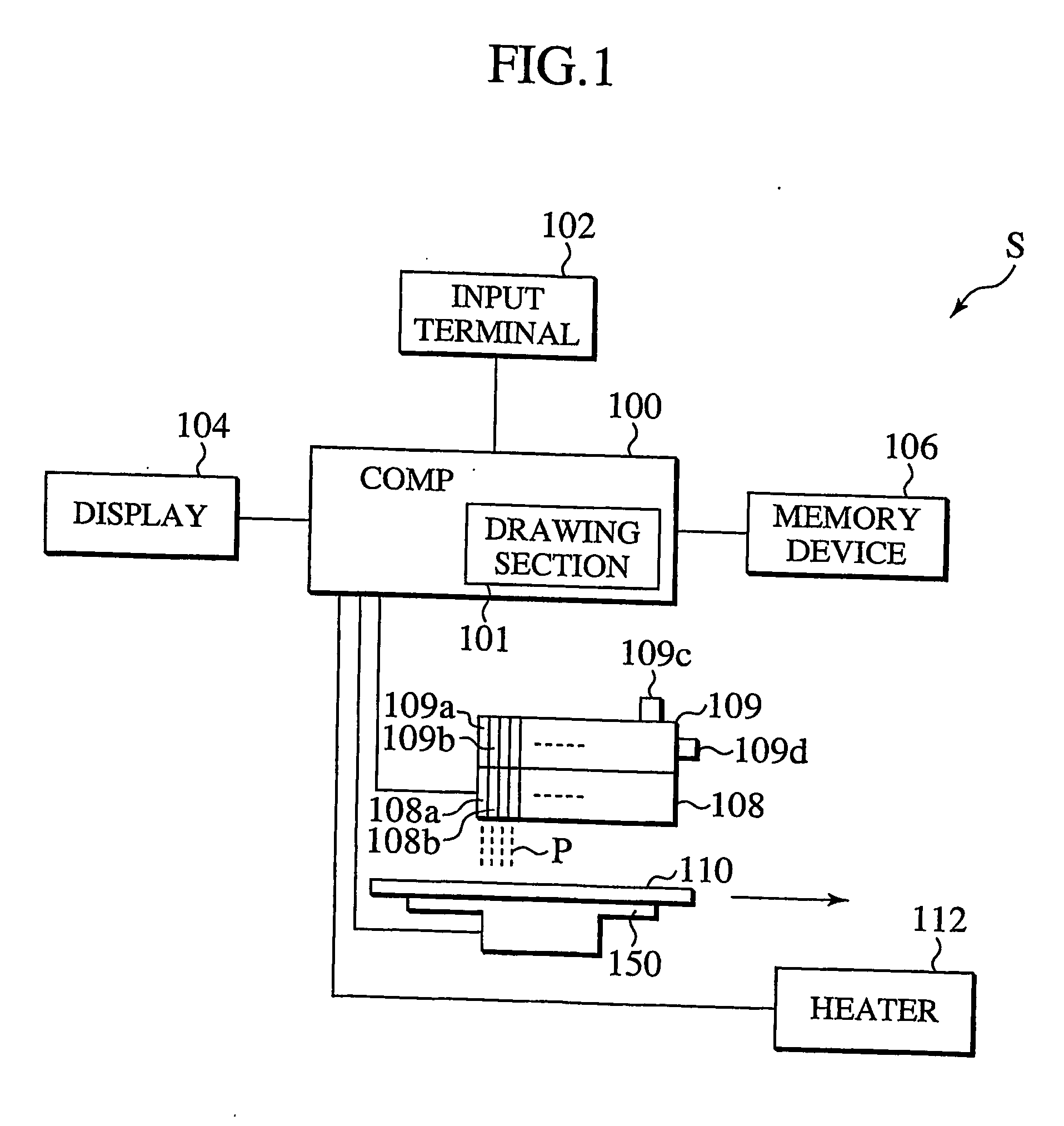Method of manufacturing secondary battery electrode, apparatus for manufacturing the same and secondary battery electrode
- Summary
- Abstract
- Description
- Claims
- Application Information
AI Technical Summary
Benefits of technology
Problems solved by technology
Method used
Image
Examples
example 1
[0107] In this Example, in a manner described below, two kinds of positive electrode inks were prepared which in order to form a positive electrode layer, included a positive electrode ink, using iron olivine, and a positive electrode ink using spinel manganese, and a negative electrode ink using graphite was prepared in order to form a negative electrode layer. The positive electrode layer and the negative electrode layer were formed based on a deposition pattern that was prepared by using a computer.
[0108]
[0109] Iron Olivine Ink
[0110] Iron olivine (LiFePO4) with a mean particle diameter of 0.5 μm (in 37% by weight), acetylene black (in 15% by weight) serving as conductive material, polymer electrolyte raw material (in 32% by weight), BETI (in 16% by weight) and bezyldimethyl-ketal serving as photochemical polymerization initiator agent (0.1% by weight in terms of polymer electrolyte raw material) were added and sufficiently stirred, thereby adjusting slurry. The resulting ink ha...
example 2
[0124] In this Example, in a manner described below, a positive electrode ink using spinet manganese was prepared in order to form a positive electrode layer, and in order to form a negative electrode layer, two kinds of negative electrode inks were prepared which included an ink using graphite and an ink using lithium titanate. A positive electrode layer and a negative electrode layer were formed based on a deposition pattern prepared by using a computer. Incidentally, the positive electrode ink using spinet manganese was adjusted in the same way as that of Example 1.
[0125]
[0126] Graphite Ink
[0127] The negative electrode ink using graphite was adjusted in the same way as that of Example 1.
[0129] Lithium titanate (Li4Ti5O12) with a mean particle diameter of 0.5 μm (in 37% by weight), acetylene black (in 15% by weight) serving as conductive material, polymer electrolyte raw material (in 32% by weight), BETI (in 16% by weight) and bezyldimethyl-ketal ser...
PUM
| Property | Measurement | Unit |
|---|---|---|
| Color | aaaaa | aaaaa |
| Electric potential / voltage | aaaaa | aaaaa |
Abstract
Description
Claims
Application Information
 Login to View More
Login to View More - R&D
- Intellectual Property
- Life Sciences
- Materials
- Tech Scout
- Unparalleled Data Quality
- Higher Quality Content
- 60% Fewer Hallucinations
Browse by: Latest US Patents, China's latest patents, Technical Efficacy Thesaurus, Application Domain, Technology Topic, Popular Technical Reports.
© 2025 PatSnap. All rights reserved.Legal|Privacy policy|Modern Slavery Act Transparency Statement|Sitemap|About US| Contact US: help@patsnap.com



